Chicago Cubs have to go sign Gerrit Cole or Stephen Strasburg

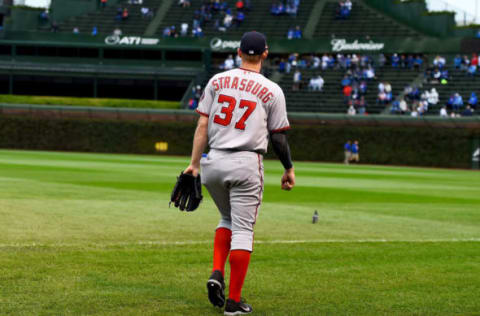
With what seems like another moratorium on offseason spending from Tom Ricketts, Theo Epstein will have to get super creative if the Chicago Cubs want to land an ace.
If the Chicago Cubs (and all of baseball, really) learned nothing from this postseason, it’s that pitching is um… well, sort of important. To say the least. That and the Cubs should really make a run at Howie Kendrick this offseason.
More important to the point of this piece, though, is that having an ace up your sleeve gives you a huge advantage in a playoff series. Having two or three means you’ve got a shot in every game. Stealing a Gerrit Cole or Stephen Strasburg away from a competitor also means you’ve killed two birds with one stone (and we like crushing red birds in Chicago).
While there have been myriad changes and disappointing outcomes since the Cubs won the World Series in 2016, what most people (fans included) forget is that the Cubs had three legitimate aces during that miraculous run. In fact, those same three Cubs finished in the top 10 of NL Cy Young balloting that season.
Jake Arrieta was fresh off a 2015 MVP season for the ages and had a crazy first half in ’16, ultimately posting 18 wins and placing 9th in the Cy running. Jon Lester won19 games against only five losses and posted a sparkling 2.44 ERA. Kyle Hendricks won 16 as well and won the MLB ERA crown at 2.13. Lester and Hendricks finished second and third respectively in the Cy Young balloting.
With everyone looking for ways to reinvent the wheel and get the Cubs back to the postseason, why not look at the easiest explanation – we haven’t had the thoroughbreds to ultimately pull us ahead by a nose at the end in a tight race. Sure, there have been issues at second base, center field and in the bullpen.
There have been issues with injuries and bad free agent signings. Maybe Joe Maddon should have kept a more structured and set lineup. However, even with all of those problems, the Cubs have been positioned to do some kind of damage come September in each of the last three years. There was something missing, despite all the other warts…
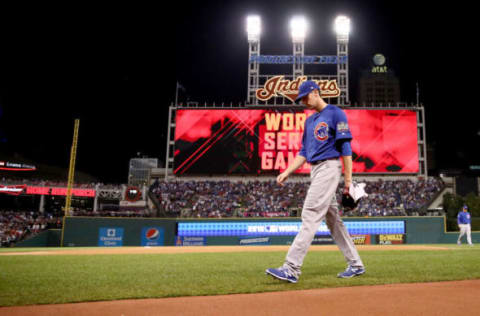
Chicago Cubs: Hendricks will need help at the top of the rotation in ’20
What the Cubs haven’t had, quite frankly, was another stud in the barn, corral, or pasture (or field, if you’d like). With the departure (and natural decline) of Arrieta and the aging of Lester, the Cubs haven’t found a way to replace those two workhorses at the top of the rotation the last couple years. Sure, Hendricks is still around and doing his thing; but out of the three, he’s the only amigo left who is still pitching at an elite level. He’s the only one of the three you’d put money on at this point in his career in a winner-take-all playoff game.
Yu Darvish was signed before the 2018 season to essentially replace Arrieta in the rotation. For his first year and a half in Chicago, it seemed as if his signing might be one of the worst signings in the history of the franchise. Then, late this past spring, Darvish went out and started challenging hitters at a much more frequent rate, posting an absurd strikeout-to-walk ratio of 229 to 56 for the season. To show how much he changed in the second half of the year, from July 3 to the end of the year, he struck out 124 and walked only seven hitters while posting a sub-3 ERA in his final 14 starts.
While Darvish had a great second half to 2019 and could be that same guy in 2020 for the entire year, is anyone willing to bet their farm on that? Didn’t think so. And, that’s nothing against Darvish – I honestly think he’ll be the real deal for an entire season in ’20.
Take a look at what both the Astros and Nationals trotted out to the mound in the playoffs: Cole, Justin Verlander, and Zack Greinke for the Astros; Max Scherzer, Strasburg, and Patrick Corbin for the Nats. The Astros trio combined to go 59-16 this season. (49-12 for the Astros, as Greinke didn’t start the season with them). The Nats triumvirate went 43-20, however Scherzer missed six starts. Do those numbers look somewhat familiar?
They should, because they’re basically the same type of numbers Cubs fans saw in 2016 when the Cubs trotted out a stud 60 percent of the time during the season and almost exclusively in the postseason.
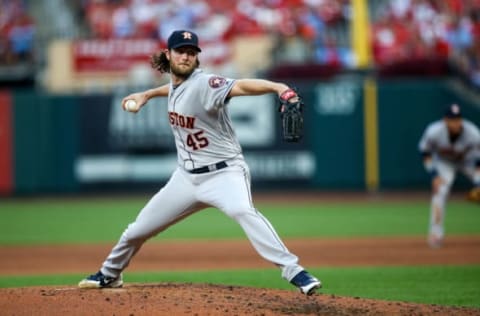
Chicago Cubs: This guy would look alright wearing blue pinstripes in 2020
The Nats threesome cost roughly $93 million last season and the Astros came in at a relatively frugal $75 million since Cole hasn’t cashed in on a free agent deal.
Yet… yet… yet.
The Cubs 2019 rotation came in at $85 million for all five starters, plus an extra $12.5 million for Tyler Chatwood, who was signed as a starter two years ago. The top three paid starters, Lester, Cole Hamels, and Darvish earned $67.5 million. While those numbers are nearly in line with one of the World Series participants, it wouldn’t be ludicrous to replace Hamels’ $20 million figure from this past year with a $30 million figure for… say, a Gerrit Cole or Stephen Strasburg.
With Cole and Strasburg officially both free agents now that Strasburg has opted out of his deal with the Nationals, what are the chances the Cubs look to add the ace they’ve been missing since the three amigos took them to the promised land in ’16?
Not good.
There I said it. All signs point to the idea that the Cubs won’t have the money to go after either of the big name aces this winter. You might now be asking, if the Cubs don’t have the money, and it’s unlikely that they sign them, why write about their chances?
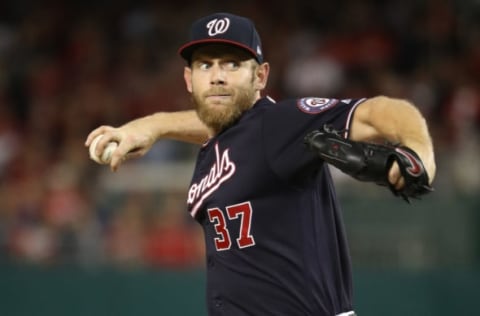
Chicago Cubs: Strasburg or Cole? Or coal?
Here’s why I’m writing this and why you’re still reading: we need one of the two. Plain and simple. Figure out a way to sign one of these guys and the Cubs have legitimized themselves in a way that hasn’t been done since they signed Big Jon Lester in December of 2014.
Easier said than done.
Per Spotrac, the 2020 Cubs estimated Competitive Balance Payroll is $210 million, as compared to $234 million from this past season. If we work under the assumption that the Cubs want to stay below that number, we can start going to work on proposing ideas for how to free up cash.
The Cubs are staring at a fat bill for 2020 that includes large increases in arbitration spending in addition to nine salaries over $10 million and three over $20 million. However, just because a player is owed a large sum of money in 2020, doesn’t mean the Cubs have to be the ones to pay it.
In addition, roughly $60 million will be shed from the payroll with the expiration of veteran contracts, including Cole Hamels, Ben Zobrist, Brandon Morrow, Pedro Strop, Steve Cishek, and Brandon Kintzler. Not saying the Cubs couldn’t bring some of these guys back, but it would be at a reduced price compared to last season.
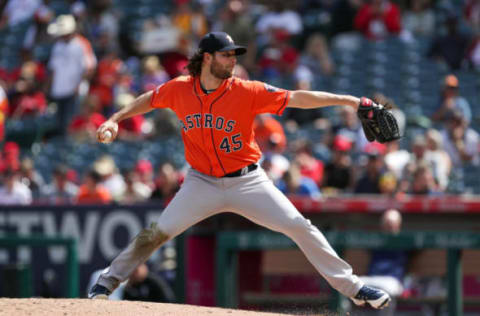
Chicago Cubs: Let’s go all-in on Cole
Going back to the idea that the Cubs don’t necessarily have to pay for guys under contract should they trade them, Addison Russell should be primed for a non-tender or trade. That’s about $5 million. Tony Barnette and Kendall Graveman are both set to make $3 million apiece. David Phelps is due $5 million and Daniel Descalso is due $2.5 million. I wouldn’t have any of them suit up for the Cubs in 2020. Descalso will have to be paid regardless, but the other four can be released with no strings attached.
More from Cubbies Crib
- Cubs starting pitching has been thriving on the North Side
- Make no mistake: the Cubs are very much about power hitters
- Cubs are giving pitcher Javier Assad a deserved shot
- Cubs: It’s time to start thinking about potential September call-ups
- Cubs: P.J. Higgins deserves to be in the lineup on a daily basis
That would shave about $11 million off Spotrac’s estimates for 2020 (Phelps was only at $1 million which didn’t factor in his incentives met in 2019 on their estimate) and leave the Cubs at just under $200 million in payroll for the 2020 season.
Funny, but that means the Cubs could add $35 million in new blood.
If that number seems like it is a little too perfect, it’s because that’s about what Cole is expected to get (and a little more than what Strasburg might garner) per year in a mega deal that will probably give him the richest deal in baseball history. Boom. Get it done. Right now.
Problem is, assuming the Cubs want to stay under this years payroll number, that leaves the Cubs with no money to sign anyone else. It also means they’d probably rather spend their money on one veteran position player like Howie Kendrick, and a couple relatively bullpen pieces. Then, there’s always the midseason slush fund to worry about. That $35 million is probably only about $20 million, which doesn’t leave enough for an ace.
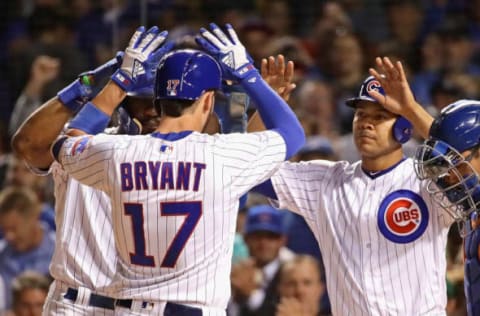
Chicago Cubs: Could one of these guys be on their way out of Chicago?
With limited funds and a payroll that will no doubt exceed the CBT threshold once again in 2020, how can the front office go after players they need with money they don’t have? Simple answer: they trade guys who are making a lot of money.
Jose Quintana‘s option was just picked up for $11.5 million and he seems like a good place to start. Replacing Quintana’s spot in the lineup with Cole, who would cost about the same as Hamels and Quintana from 2019, seems like a significant upgrade. Even though Quintana might be a legitimately efficient and on-par deal for a solid third or fourth starter, the Cubs could figure they could swap out Quintana and Hamels for Cole and one of Adbert Alzolay, Alec Mills, or even Tyler Chatwood.
Speaking of Chatwood, the erratic yet sometimes very effective right-hander may be a trade target for someone thinking they can make him back into a starter. Chatwood is due $13 million, and even if they Cubs had to eat $3-5 million on the deal, it might be worth it.
Fans aren’t going to like it, but Kris Bryant is another high-priced player who could be shipped out, especially if the pending arbitration hearing regarding his status turns out he has only one year of team control available. Estimates put his arbitration number around $18 million for next year; if the Cubs feel they’re not getting anywhere with extension overtures, it’s possible they could move their former MVP, even if it might be unpopular with fans. The savings would not only pay for more than half of what Cole would cost next season, but would also surely bring back some prospects or major league ready arms and gloves.
Jason Heyward would be the most obvious choice because of the four years and $96 million still left on his deal, but it’s hard to believe anyone is jumping at the chance to pick him up at that cost. Again, if the Cubs could swing a deal to trade Heyward, they’d probably have to eat some money; if it’s around $5 million per year, I think I’d be okay with that. While you’d be losing a great glove in right field, moving a Bryant, Willson Contreras, or some other pick-up there would give you a big offensive boost. If the market for a guy like Nicholas Castellanos doesn’t materialize and the Cubs found a taker for Heyward (think Giants), it’s very possible the Cubs could look to sign Castellanos on the cheap and move Heyward anyway, regardless of the cost savings aspect.
Next. Ricketts won't spend big this offseason. dark
Even though it appears very unlikely the Cubs could and would go after Cole or Strasburg, it’s essential that they do. The Cubs need another ace, and both pitchers showed this postseason that they have more than enough mettle for the biggest stage in the world.